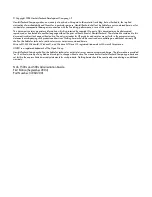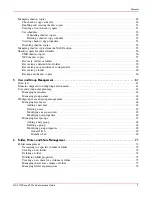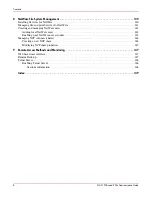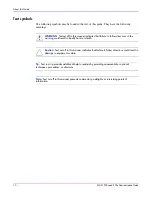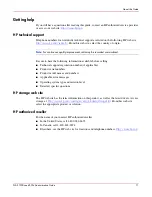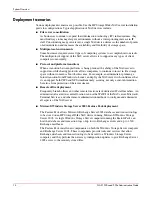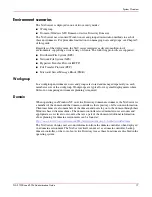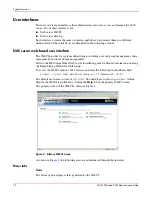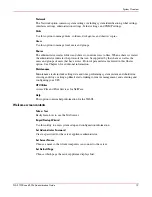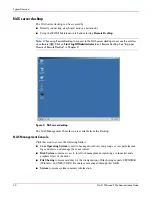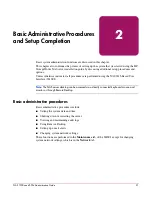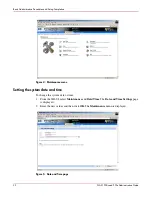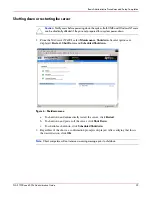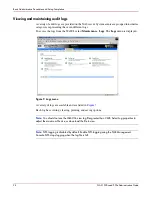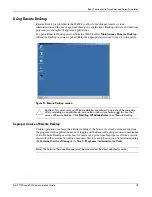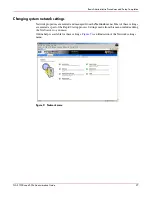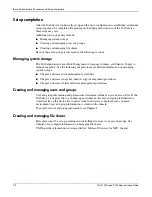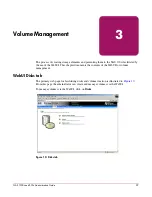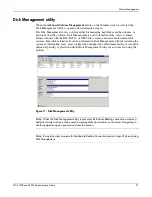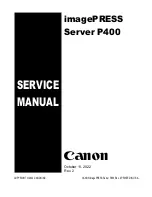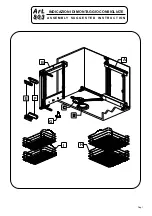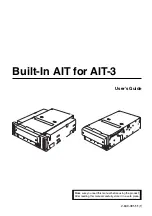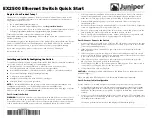
System Overview
16
NAS 1500s and 500s Administration Guide
Deployment scenarios
Various deployment scenarios are possible. See the HP StorageWorks NAS server installation
guide for configurations. Typical application of NAS devices include:
■
File server consolidation
As businesses continue to expand their information technology (IT) infrastructures, they
must find ways to manage larger environments without a corresponding increase in IT
staff. Consolidating many servers into a single NAS device decreases the number of points
of administration and increases the availability and flexibility of storage space.
■
Multiprotocol environments
Some businesses require several types of computing systems to accomplish various tasks.
The multiprotocol support of the NAS server allows it to support many types of client
computers concurrently.
■
Protocol and platform transitions
When a transition between platforms is being planned, the ability of the NAS server to
support most file sharing protocols allows companies to continue to invest in file storage
space without concerns about obsolescence. For example, an administrator planning a
future transition from Windows to Linux can deploy the NAS server with confidence that
it can support both CIFS and NFS simultaneously, assuring not only a smooth transition,
but also a firm protection of their investment.
■
Remote office deployment
Frequently, branch offices and other remote locations lack dedicated IT staff members. An
administrator located in a central location can use the WebUI of the NAS server, Microsoft
Terminal Services, and other remote administration methods to configure and administer
all aspects of the NAS server.
■
Microsoft Windows Storage Server 2003 Feature Pack deployment
The Feature Pack allows Microsoft Exchange Server 2003 databases and transaction logs
to be stored on an HP StorageWorks NAS device running Microsoft Windows Storage
Server 2003. A single Windows Storage Server computer running the Feature Pack can
host the databases and transaction logs of up to two Exchange servers and up to 1,500
Exchange mailboxes.
The Feature Pack installs new components on both the Windows Storage Server computer
and Exchange Server 2003. These components provide tools and services that allow
Exchange databases and transaction logs to be moved to a Windows Storage Server
computer, and they perform the necessary configuration updates to give Exchange Server
2003 access to the remotely stored files.

